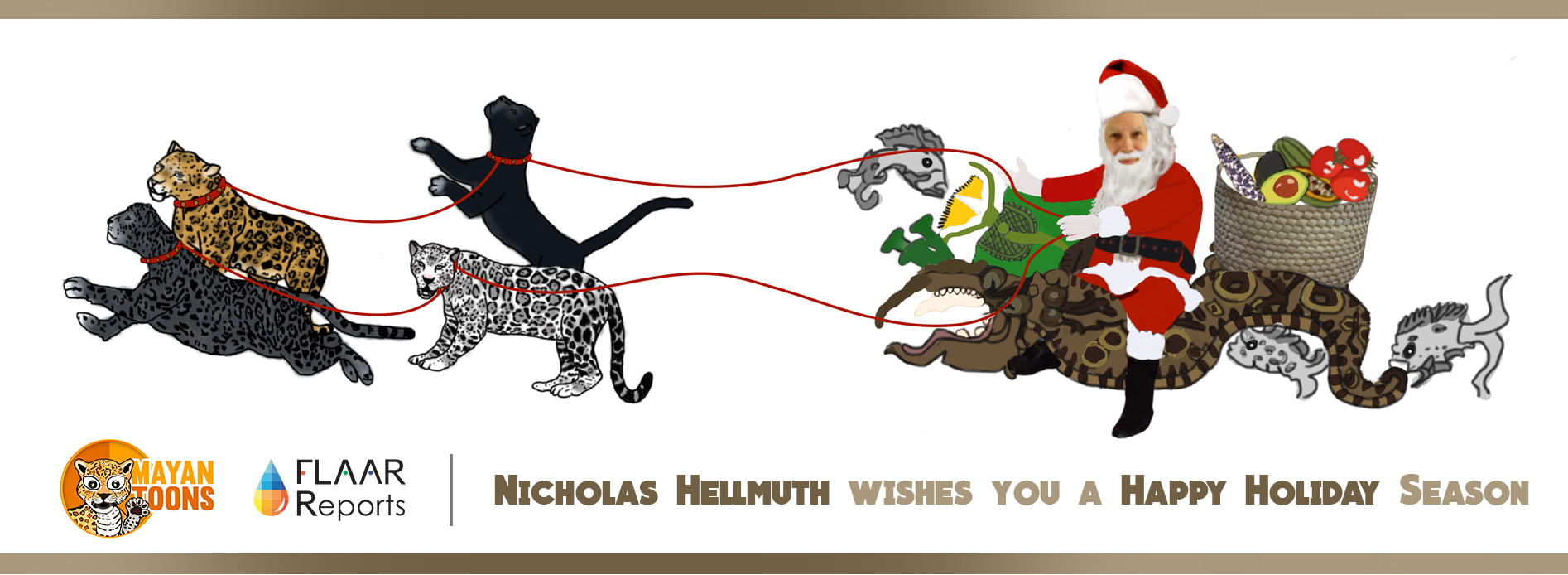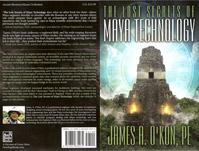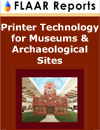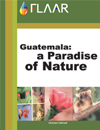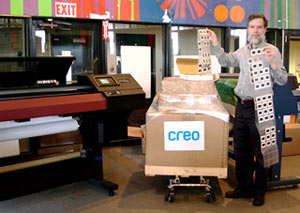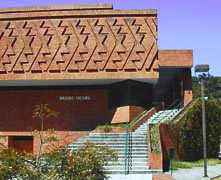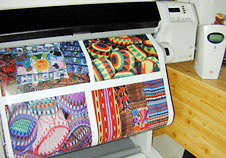Mayan research topics at FLAAR and FLAAR Mesoamerica, 2021-2022
Posted December 6, 2021
Every year our 33 staff for research, video, and reports production teams are all continuing their research and producing publications and videos (including animated videos). All the new bibliographies we are putting on www.maya-ethnozoology.org, www.maya-ethnobotany.org, www.maya-archaeology.org, and www.digital-photography.org. Animated videos are on www.mayantoons.org. Social media posts are via www.flaar-mesoamerica.org and Instagram, Facebook, etc.
We are finishing a 15-month field work research project in remote areas of the Municipio de Livingston (east half of the Departamento de Izabal, Guatemala).
CONAP has awarded us a 5-year project of cooperation and coordination to do flora, fauna, and ecosystem field work throughout the entire Reserva de la Biosfera Maya (RBM) for years 2021-2025. Our initial focus is on Parque Nacional Yaxha, Nakum and Naranjo areas but we are also doing field work in nearby areas as soon as the rainy-season rains cease (and the mud roads can be transited with 4WD).
Maya Research Programs at FLAAR 2018-2020
Posted September 16, 2019
We have finished our first year of field work on flora, fauna, and ecosystems of Parque Nacional Yaxha Nakum Naranjo. We did field work an average of one week very month from August 2018 through July 2019 (plus an initial visit in April 2018). Our focus was to find and photograph as much as possible on each field trip.
We are updating our list of 15 FLAAR publications on the rubber ballgames of the Maya, Mixtec, Aztec, etc.
We are also updating our 1990's FLAAR publications on hunting scenes on Early Classic and Late Classic. Many of the headdresses and costumes worn by deer hunters were also worn by some ballplayers.
Working on updating our list of all FLAAR research on the Cholti-Lacandon (Sac Balam, Chiapas, 17th century) and the Yucatec Lacandon (of Chiapas today).
In 2020 will be introducing pre-Columbian Mesoamerica deities which so far have not been identified or named.
Important book on Chenes Maya Palace Architecture
Posted September 26, 2017
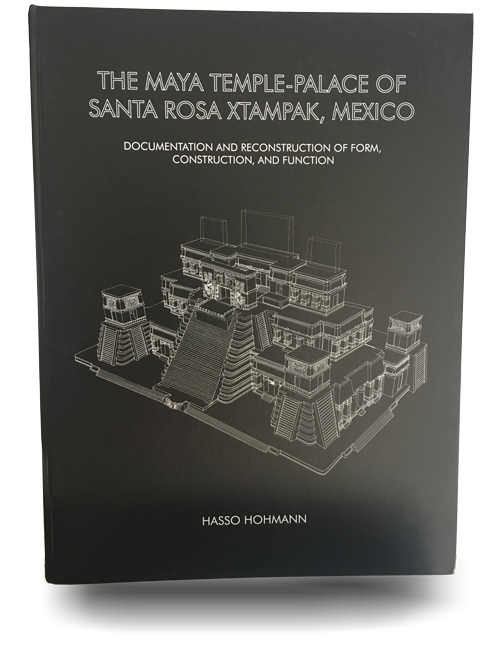
The Maya Temple-Palace of Santa Rosa Xtampak, Mexico Documentation and Recostruction of Form, Construction, and Function by Hasso Hohmann
|
Hasso Hohmann, an accomplished architectural historian in Graz, Austria, has completed many years of research and production of precise architectural drawings of the Temple-Palace of Santa Rosa Xtampak, Mexico.
Once I get back to my St Louis office I will be able to see the book and its impressive drawings and we will have an entire web page focused on this important publication. |
FLAAR Mesoamerica has the honor to invite you to�
Posted February 13, 2017
Plantas Comestibles Nutritivas para Mejorar Significativamente la Dieta y Salud de los Ni�os en las Zonas Rurales de Guatemala
This conference is made to present the importance of nutrition among Guatemalan children, especially in rural areas, and the health benefits that this can have in the Mayan society.
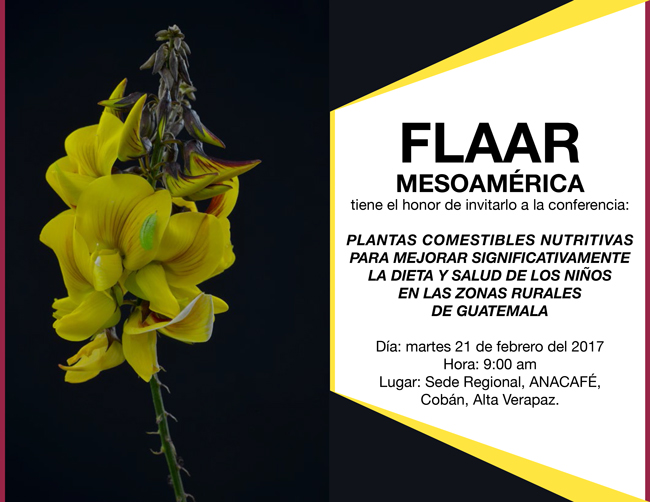

You can download the formal invitation in the link above.
Frankfurt Book Fair is the best in the world
for authors and publishers
Posted October 10, 2016
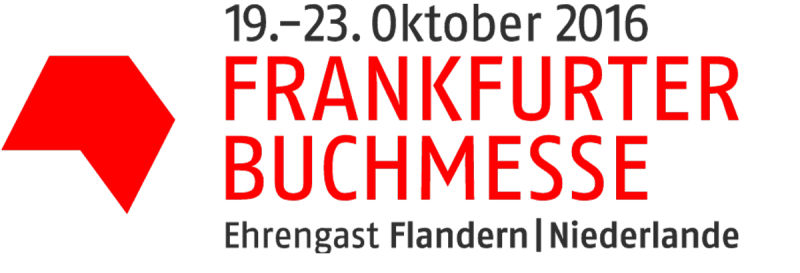
FLAAR has been publishing books since the 1970�s, but now that you can publish e-books digitally, we are writing about the advantages of continuing with hard-copy editions (yes, even in this era of Kindle books and iPad options).
We are looking at coffee table art book trends, comic book trends, and children�s book trends.
FLAAR Reports Assistant Editors Fey Moreira and Diana Cruz will be attending the Frankfurt Book Fair 2016.
They will be reviewing educational books of all sizes, shapes, formats and for all age groups. They will be evaluating book design, size, content, and other factors.
FLAAR Reports attends expos as PRESS all around the world, most recently at Glasstec and then Photokina the same week: both in Germany. We evaluate short run digital presses and other kinds of printing equipment (for over 18 years actually).
Dr Nicholas Hellmuth will be attending ITMA Asia 2016 in Shanghai the same days, but he looks forward to Frankfurt Book Fair 2017. But in the meantime, the two review editors from FLAAR Reports, Fey and Diana, look forward to meeting you at the Frankfurt Book Fair 2016.
To learn more about this remarkable expo, their web site is www.BuchMesse.de/en/
Suggested reading on the Lacandon Maya, Chiapas, Mexico
Posted Jan. 4, 2016, to usher in the New Year
For this New Year, 2016, we at FLAAR are preparing a comprehensive bibliography on the Lacandon Maya of Chiapas. The first publication of Nicholas Hellmuth, about 46 years ago, was a bibliography on the Lacandon Maya (including the Cholti-Lacandon). This was published in 1970 and is based on Nicholas’s term paper assignment for his last year as a student at Harvard.
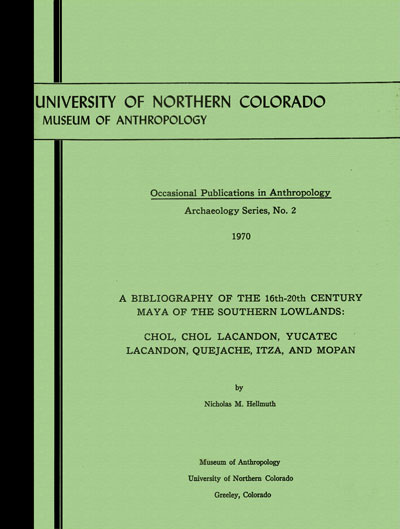
We have finally tracked down a copy of this KATUNOB publication and will be scanning and issuing it as a PDF. Plus, to make it even more useful, we will have it in copy-and-paste-able format (in other words, not the locked kind of image-scan, but a MS Word document version). This way, you can copy-and-paste into your own research papers.
It takes a month or so to do the word-by-word correction of any scanned text, especially text with lots of non-English words. Scanner software has to be corrected letter-by-letter (if you know of a better scanner software, please let us know at FrontDesk “at” FLAAR.org). But it is still faster to scan than to try to retype from scratch into a computer.
It is faster to scan as an image, but then you can’t search, can’t copy-and-paste. We feel a full-text version is better for students, scholars, interested lay people, and naturally we provide this work for the Mayan people. We were pleasantly surprised to see a Lacandon Maya web site list this 1970 opus by Nicholas as a great resource.
Happy Holidays, December and January New Year
Posted December 03, 2015
FLAAR Reports has two divisions; you are now on one of the web sites of the tropical Mesoamerica flora and fauna team. If you are interested in wide-format inkjet printers, we have an entire network to explain this technology: www.wide-format-printers.org
There is also a growing team of illustrators and graphic designers who do educational children�s books (to show the world the remarkable plants and animals of 2000 years of Mayan civilization in Guatemala, Mexico, Belize, Honduras, and El Salvador).
This holiday card shows four different natural actual colorations of jaguars: normal color, rare but occasional white color, “gray” black, and “total black” (often mistakenly assumed to be a black panther).
The gray and black variants are melanistic jaguars, with one or more genes different than the DNA of the traditional jaguar color. Even in the “solid black” jaguar, the spots still exist and can be seen when the feline is swimming and the sun is at the right angle. Yes, felines love water and love to swim (and chase and eat crocodiles and alligators).
To learn more about animals of the Mayan world, take a look at our
www.maya-ethnozoology.org.
To experience remarkable tropical flowers of Guatemala, enjoy our
www.maya-ethnobotany.org.
To see our newly launched cartoon book web site, look at our
www.mayan-characters-value-based-education.org.
Here you can see a video of Dr Nicholas interacting with a 350 pound tapir and her spotted baby.
Lots of bibliographies of Mayan utilitarian plants
Posted October 7, 2015
We have been out in remote areas on field trips so much of 2015 that we have to catch up with writing NEWS for this home page.
So this week we will post an introductory bibliography on Heliconia plants of Mesoamerica in general and Guatemala in particular.
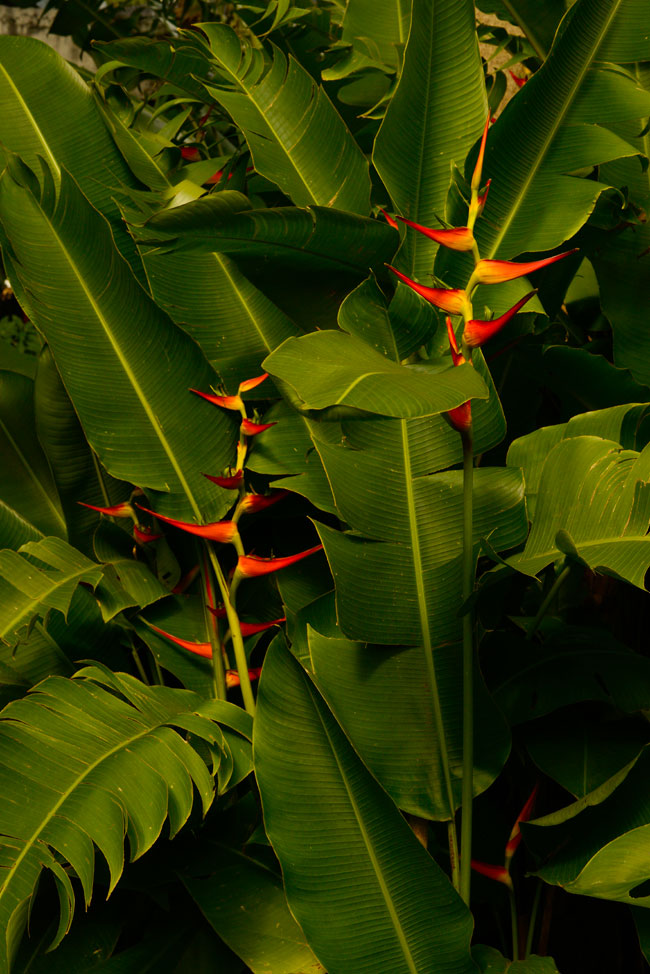
We have three species of Heliconia of Guatemala in our ethnobotanical garden:
Heliconia latisphata,
Heliconia rostrata and
Heliconia bihai.
We hope to add more local Heliconia species later this year.
More research on cacao (cocoa) especially Theobroma bicolor
Posted Dec. 19, 2014
FLAAR Reports teams continue to do research on multiple aspects of cacao of Mesoamerica, especially in Guatemala. Pataxte is definitely an interest of ours (for many years).
We have already visited the K'ekchi' Mayan speaking town named "patexte" (Balamte', Alta Verapaz). Balamte' is the word for Theobroma bicolor in Q'eqchi' Mayan (K'ekchi') and surprisingly also the word for pataxte in Yucatec Maya (a Lowland language which does not often share identical words with a Mayan language in areas of higher elevation).
We have now visited Playa Patexte and Rio Pataxte in Izabal area of Guatemala. Plus we were in the area of another Rio Pataxte in a far away part of Guatemala.
Presently we are searching for Theobroma angustifolium, plus more of the thousand-year old flavorings for cacao of the Aztecs and Classic Maya. Our experience with utilitarian crops of the Maya is already leading to being asked for consulting services (see our www.maya-ethnobotany.org for more information on how to have Dr Hellmuth assist you and your company).
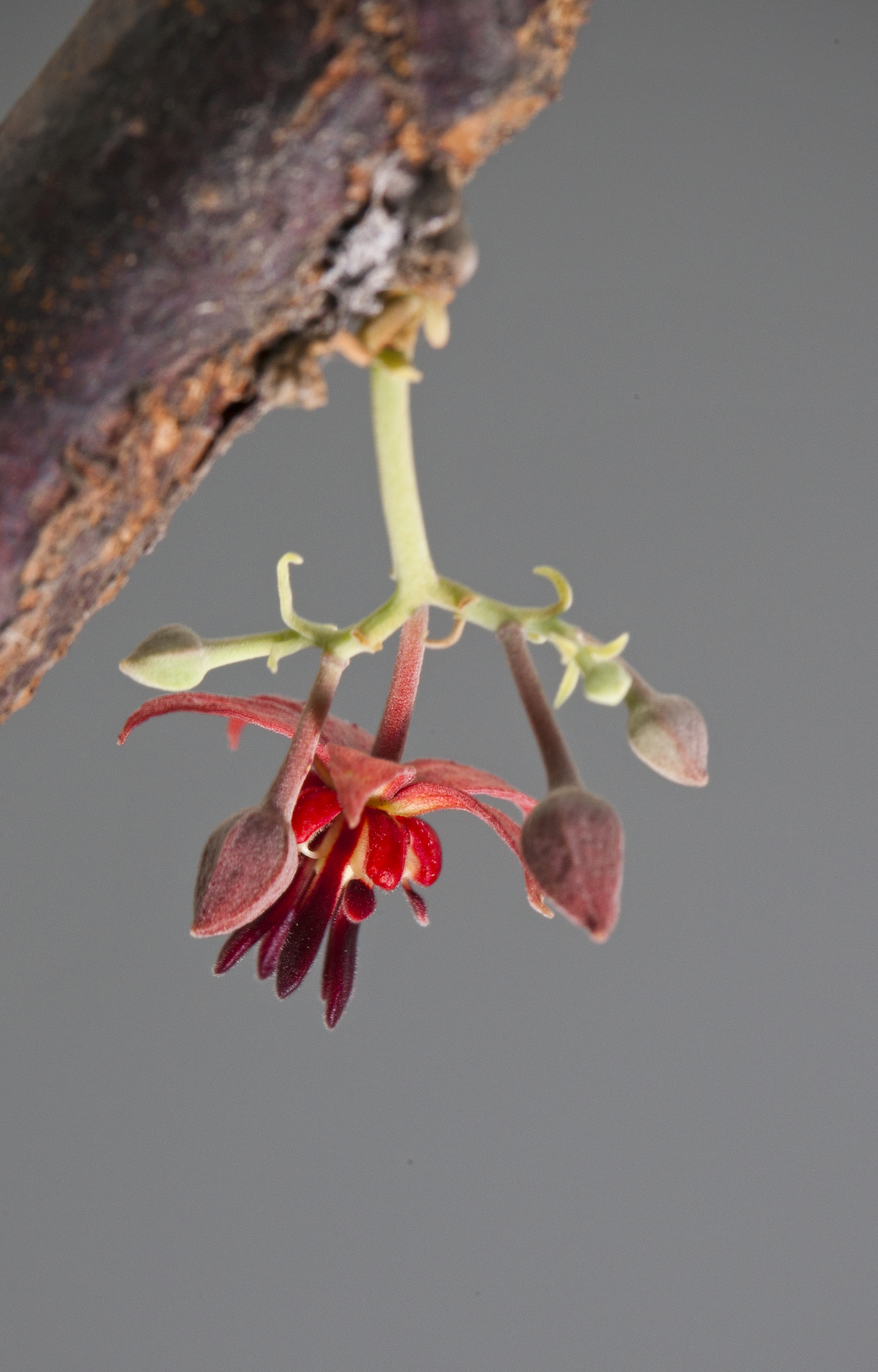
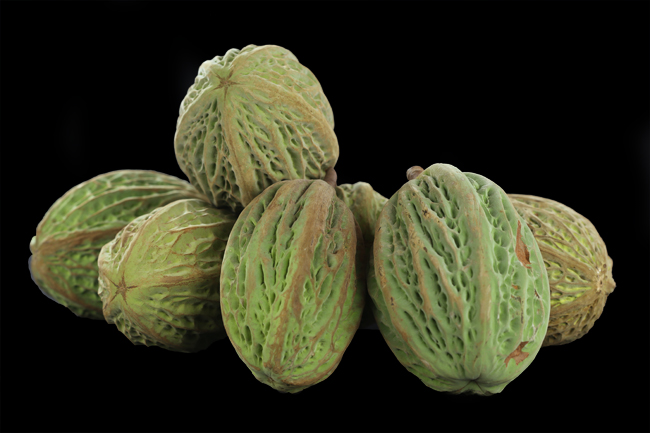
New book on dye colorants from Guatemalan plants
Posted Oct. 29, 2014
Olga Reiche has finished an updated edition of her book on dye colorants from plants of the Maya area. These are colorants for paper, hides, textiles, etc.
Some of the same colorants can be used for architecture and ceramics but that is not the focus of her book; colorants for building facades and murals, has been covered by Merle Greene Robertson for Palenque and by Steven Houston and his team for the overall Maya area.
The book, Plantas tintóreas de Guatemala, for Maya clothing was presented by Olga Reiche, and by Ana Cofiño (the publisher). Dr Nicholas Hellmuth, FLAAR, was invited to evaluate the contents of the book and the experience of the author. The three gave their presentations at the Museo Ixchel, on the campus of the UFM.
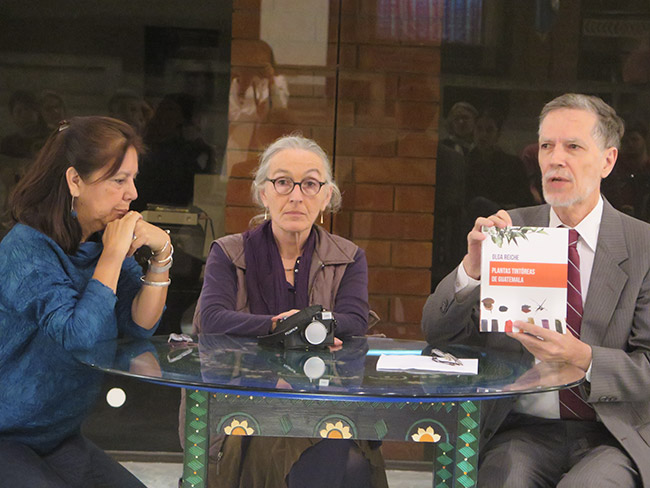
Expanded bibliography for ethnobotany of the Maya
Updated May 13, 2014
Posted Nov. 29, 2012
Our annual report on sacred flowers, edible and utilitarian plants will be updated for June 2014. Plus we will be adding lots of fresh photographs from field trips around the Maya world.
We are also adding pages on bibliographies, plant-by-plant on this "books" web site. The discussion of the plants is on www.maya-ethnobotany.org, but the bibliography, one plant per page, is on the present "books" web site.
More FLAAR Reports on ballgame iconography
Posted Jan. 2, 2013
During 2013 we will try to catch up with scanning and issuing all 12 of our ballgame reports from the 1990�s. Most cover Classic Maya vases, bowls, stelae, and altars., but we are also interested in all non-Maya ballgame sculptures as well, especially from Veracruz. The first report will be on ballgame sculpture of a small site in Veracruz (not El Tajin).
After over 49 years experience with Maya civilization we do not worry too much about the "end" of the Maya calender and Baktun 13. We have plenty of educational publications planned for later in 2012 and into 2013.
Updating bibliography for Maya ethnozoology
Posted Nov. 27, 2012
For early January 2013 we hope to have the bibliography updated for books on Maya mammals, birds, reptiles, fish, bats, insects, butterflies and other sacred and edible tropical fauna. This update will be in our annual report on sacred and utilitarian fauna of the Maya areas of Mesoamerica, especially of Guatemala.
This report covers creatures which appear in Maya ceramic art, murals, figurines, or hieroglyphs. Although we focus on iconography and epigraphy we also cover Maya hunting and diet.
For 2012 FLAAR is continuing several new programs in Maya iconography, ethnobotany, and ethnozoology. Two years ago we began long-range projects in 3D scanning and 3D modling software for artifacts, sculptures, cacao pods and animals. We also started projects in 3D modeling of Classic Mayan architecture of Peten.
Check back for more information. If you wish to work on any of these projects, we consider volunteers from universities, museums, or individuals who have special talents. Sorry, no short time volunteers (has to be a reasonable period). We rarely take volunteers off the street (we prefer to be arranged in advance).
This web site covers archaeology, Maya art, Mayan pyramid temple, palace and ball court architecture of Guatemala, Belize, Mexico and Honduras with links to related sites and information on the role of digital imaging in archaeological research. This site also offers suggestions for books on the Olmec, Teotihuacan, Aztec, and Maya. Travel information for Mexico, Belize, Honduras, and Guatemala with lists of recommended hotels and Spanish language courses. Precolumbian Mayan art is a fascinating subject and this site offers all aspects of Mayan art, from jade to Mayan hieroglyphs and epigraphy. This site on Mayan art also explores iconography, which means the study of meaning in art.
Maya-Art-Books.org is presented by Professor Nicholas Hellmuth, for many years director of the center for digital technology at Bowling Green State University of Ohio. The university tore down the building that houses our archive and digital imaging evaluation center, so we simply moved back to St Louis where we were for decades before moving to Ohio. St Louis is Nicholas’s home. Our main office is still in Guatemala, as would be expected for an institute dedicated to the study of Mayan culture. Currently 18 people work with FLAAR in Guatemala.
Although this web site is named “Maya” we also cover the art and books on the Olmec, Teotihuacan, Zapotec, Mixtec, Classic Veracruz, Toltec, and Aztec, as well as occasionally on West Coast Mexico cultures.
The Lost Secrets of Maya Technology
We are currently evaluating this book by James O'Kon and will soon be posting our review.
Abstract of the Mayan World two thousand years ago
Pre-Columbian means before Columbus landed on the shores of the New World. This may be written as precolumbian or pre-Columbian. Although this term applies to the entire New World, it is used primarily to discuss ancient Mesoamerica. A synonym for pre-Columbian would be pre-Hispanic.
Pre-Hispanic, also written somewhat less correctly as prehispanic, means before the Spanish conquered Mexico and Peru.
Mesoamerica, always written as one word, means the area of the New World that was occupied or significantly influenced by the leading civilizations of the area, namely the early and precocious Olmec, the expansionistic Teotihuacan culture, the subsequent Toltecs, or the final Aztec. Naturally the Maya are a main component of the concept of Mesoamerica as well. Mesoamerica includes most (but not all of) Mexico, all of Belize (former British Honduras), Guatemala, Honduras, El Salvador, Nicaragua, and parts of Costa Rica. The equivalent terms for the pre Hispanic civilizations of South America would be "Andean," namely the Incas, Moche, Chavin, Huari (Wari) and other great cultures of Peru and adjacent countries.
The Maya area encompass the Mexican states of Tabasco, Yucatan, Campeche, Quintana Roo, and Chiapas, plus adjacent Belize and most of Guatemala, especially the Peten (El Peten) and Quiche (El Quiche). but also Alta Verapaz, Baja Verapaz, Izabal, Huehuetenango and neighboring areas. Portions of El Salvador and Honduras are also within the greater Maya area. Since this section doubles as an abstract of the overall web site and also as a glossary, it is worth pointing out a few common ways not to spell the name of these countries. Guatemala is the proper way, not Guatimala or Guatamala. Belize is the spelling in English, Belice is the spelling in Spanish.
In Guatemala the key Maya sites, in addition to Tikal, are Uaxactun, Yaxha, Nakum, Piedras Negras, Dos Pilas, Aguateca, Seibal, El Mirador, Nakbe, and hundreds more. But Guatemala was also the home for several non-Maya people, such as Xinca, and the Cotzumalhuapa people with their capital of Bilbao. Escuintla was the home to several other non-Maya cultural groups, including the enigmatic Teotihuacan-related Tiquisate culture.
The Olmec also influenced early Guatemala. Otherwise, the main home of the Olmec was in far away Veracruz Tabasco, and Guerrero Mexico. For several decades FLAAR offered tours, trips, vacations, and archaeology expeditions to the Olmec, Maya, Mixtec, Zapotec, Toltec, Aztec, areas as well as to El Tajin and other fascinating ruins of Veracruz.
The best known Maya sites in Mexico are Tulum and Chichen Itza, since everyone who visits Cancun, Mexico, goes to Tulum and Chichen Itza. Other key Maya sites are Uxmal, Labna, Sayil, Kabah, Palenque, Copan, (in Honduras), Edzna. Lesser visited Maya ruins include Calakmul, Tonina, Bonampak, Yaxchilan, Edzna, and hundreds more.
Sub-areas of the Maya are the Chenes, with Santa Rosa Xtampak being an important ruin. The Puuc area includes the Uxmal core area but also over 150 other Maya sites. The Rio Bec area is to the south, with Rio Bec A, Rio Bec B, and dozens more. Xpuhil, Becan, and Chicanna are especially interesting sites.
Oaxaca, Mexico, offers another concentration of preColumbian civilizations, such as the Mixtec, Zapotec, and whoever it was that built Dainzu. Dainzu sculpture pictures a bizarre ball game where the athletes used masks and gloves. The players were fully padded as though it was rocks they were throwing in the game, not rubber balls. In the normal Mesoamerican ballgame, the ball was of rubber, and usually hit with the hips or a chest device known as a ball deflector. Key sites in the Oaxaca area of Mesoamerica are Mitla and Monte Alban.
Teotihuacan, Xochicalco, and Tula are regional capitals of their respective civilizations. Museums at these sites will show you the art, artifacts, and sculpture. Architectural history of these societies is another educational aspect of studying these groups.
Most of these pre Hispanic peoples played a variety of sports, especially the rubber ball game, known from the infamous scenes in the ball court of Chichen Itza. Other ballcourts are at Copan, though actually almost all Maya cities have ball courts. Several conferences, forums, and symposiums have been organized on the ballgames of ancient America. You can do a search by subject within the books section of this site. Many publications cover these subjects. We are scanning, and reissuing in this year 2012, in electronic PDF format, the 12 FLAAR Reports on ballgames that we researched, wrote, and provided to people attending our Maya symposiums in Florida in the 1990’s.
Maya or Mayan?
Maya is both a noun and an adjective. The word Mayan is technically correct only for the language. Thus, the Maya people spoke the Mayan language. Too make it all the more confusing, one of the Mayan languages is "Yucatec Maya." Today, in normal American usage, Mayan is accepted as the adjective, though scholars prefer to keep to the word Maya. The Maya people built fabulous Maya pyramids while speaking Chol Mayan language with some influence from Yucatec Maya language. These are separate Mayan languages, not dialects.
The word archaeology can be spelled, and mis-spelled a variety of ways, such as archeology. Archaeology is a sub-discipline of anthropology, as are ethnography and ethnology. Often these are grouped with the Social Sciences, often with the Humanities. Obviously the arts come into play as well, since the Aztec, Olmec, Mixtec, Maya, Zapotec, Toltec, Teotihuacan, West Coast Mexico, and other prehispanic civilizations produced all kinds of art, murals, sculpture, stelae, pottery, and monumental architecture. Their most famous buildings are temples, pyramids, palaces, ball courts, and sweat baths.
In the beginning archaeology was a search for buried treasure, tombs, and gold, or in the case of the Maya, for jade and polychrome painted vases. Nowadays it is a search for knowledge that keeps most archaeologists going. Settlement pattern surveys are considered far more appropriate than digging up tombs. Potsherds, especially rim sherds, are the mainstay of archaeology today. Artifacts, not art, is the main subject matter of field projects.
Looting is a sad result of poverty, lack of understanding of the scientific knowledge which is destroyed by looters, and greed. In the 1970’s we at FLAAR were the first and only organization which went to the protection of the Maya ruins of Yaxha (which in that year were abandoned). With the assistance of the Asociacion Tikal and our own fund-raising, we were able to protect Yaxha for five seasons. During these same years FLAAR lobbied with FYDEP and other government organizations to have Yaxha and Sacnab declared a parque nacional. Later many helpful Guatemalan citizens enlarged that park to include Naranjo and Nakum.
Geology is a key part of the study of Maya art and archaeology
Chert (flint is not found in Central America, just the form that is properly called chert), obsidian, and seashell are the main form of Maya artifacts in addition to pottery.
In art the Maya worked jade (jadeite), stone of many kinds especially chert (usually misnamed as flint), obsidian (volcanic glass), seashell, bone, etc. Jade comes in a variety of colors. Check out the section of our web site on the Tomb of the Jade Jaguar. The artists who produced the pottery and the sculptors who handled the jade are a credit to the achievements of this enterprising culture. Pottery making was an important industry in pre-Columbian Mesoamerica. Pictures are available in art books, text books, coffee table art books and other gallery catalogs. Art museums, art museum catalogs, and traveling exhibits also provide pictures of Maya art.
However beware of fake Mayan art, or the even more subtle forgeries which are real thousand-year old vases, bowls or plates, but which have been cleverly repainted in the guise of "restoration." 90% of the repainted vases, plates, and bowls are, by the repainting, ruined. They look garish, new, fresh, and definitely do not look pre-Columbian any more. The original style is blemished by this repainting.
The Maya are increasingly famous for their ancient scripts. People who study ancient hieroglyphs are known as Epigraphers. They practice epigraphy. Glyphs is an abbreviation of hieroglyphs. Often they are misnamed as hieroglyphics.
Human languages are always enjoyable to study. Plenty of Mayan-English, Mayan-Spanish dictionaries are available. Many people have a hobby to study precolumbian Mayan hieroglyphs. Linguistics is the field of study of language, linguists are the specialists who do this. Most Mayan hieroglyphic inscriptions are on stelae (stela, or stelas, spelled variously), on altars, lintels, and other monumental stone sculpture. In the last few years people have focused intensely on deciphering the Primary Standard Sequence of glyphs on polychrome Maya vases. Rollouts (circumferential rollout photographs) are the way to study this class of ancient artifact. The main form of hieroglyphic writing was probably in codices. The Aztec, Mixtec, and Borgia Group cultures also had codices, which are published by ADEVA, in Graz, Austria (see books section of this web site).
Other aspects of Maya civilization which attract study are their music. The ancient Maya had ocarinas, whistles of a variety of kinds, and wind instruments. Dance was a key part of ceremonies. In their daily life fishing and hunting were common, especially for deer, peccary, and all kinds of small animals. Today bird watching is a popular activity for tourists. The rain forest is filled with all kinds of tropical birds, as well as flowers, plants such as heliconia, orchids, and bromeliads.
On expedition archaeologists also have to know about soils, botany, native horticulture, as well as local plants and flowers of Latin America. The Maya reverred many plants and flowers such as the water lily. Zoology is also part of the multi-disciplinary approach, with insects, amphibians, reptiles (especially snakes and iguanas), birds, and mammals. FLAAR is one of the leading institutes for documenting the importance of ethnobotanical and ethnozoological studies. We are dedicated to photographing sacred trees, flowers, insects, shellfish and all the creatures and plants that were utilized by the ancient Maya so that students, scholars, and the general public in Guatemala can see the beauty of their heritage over the last several thousand years. Also it is crucial to protect the fragile eco-systems of this part of the world
Discovery and exploration was an exciting epoch. Maudslay, Maler and other explorers left fascinating diaries of their first visits to the Maya sites. Check out the books section for their writings.
Scholars who study art history of the Maya area usually practice what is known as iconography, the study of meaning in art. Aesthetics, connoiseurship, style, and other aspects are also included in art history. Archaeologists who work in the Maya area are trained in anthropology, social anthropology and cultural anthropology, and not always in art or art history. Thus art appreciation is a rare sub-speciality in Mesoamerican studies. A person who devotes themselves to the study of anything having to do with the Maya is known as a Mayanist. Since the subject of Maya civilization involves so much that is artistic, our web sites are devoted to increasing awareness of the visual arts of ancient civilizations and peoples. Ethnography is the study of a culture, ethnology is the comparative study of many cultures. A new glossary by Nicholas Hellmuth is being finished which should help understand this jargon.
Many institutes are involved in the study of the ancient Maya, both at leading universities as well as smaller institutes such as FLAAR. Weekend seminars, courses, and educational programs are increasingly popular.
Although most beginning students seek all their answers from the Internet, we urge you to get your hands on pertinent books, journals, and other publications as well. Reading books will give you a depth of knowledge that is never going to happen on the Internet. Wonderful though the Web is, web sites are only the surface of the subject. All the real facts and artifacts are in books. For that reason this original web site is devoted to books, namely www.maya-art-books.org.
Most recently updated January 2, 2013.
Previously updated Nov. 29, 2012, Nov. 27, 2012, Jan. 17, 2012, May 25, 2010. June 2009, March 9, 2005, April 29, 2004. This site first updated Nov-15, 1996.




